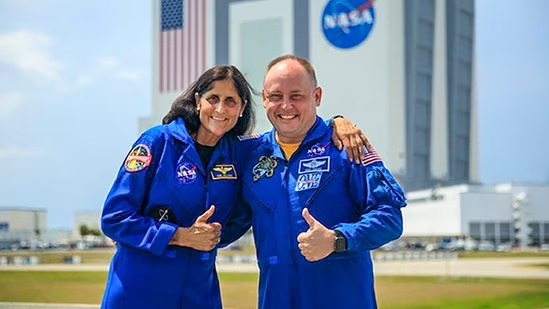Washington, D.C. : Astronauts Sunita Williams and Butch Wilmore find themselves in an unexpected situation aboard the International Space Station (ISS). Their return to Earth has been delayed due to technical glitches with Boeing’s Starliner capsule, marking a stark contrast to SpaceX’s successful astronaut missions since 2020.
The Starliner Thruster Issues
Nasa recently announced that Williams and Wilmore will spend extra time on the ISS due to problems with the Boeing Starliner thrusters. Unlike SpaceX, which has been ferrying astronauts to and from the ISS, this was Boeing’s first manned test flight. The capsule encountered thruster failures and helium leaks, prompting Nasa and Boeing to extend the astronauts’ mission.
The Road Ahead
Addressing a news conference, Mark Nappi, Starliner program manager and vice president, expressed confidence in the vehicle’s safety for the crew’s return. “Our mission was to get the crew to the ISS, and that has been completed,” Nappi stated. “Now it’s time to focus on returning the crew safely.” The Starliner team is meticulously analyzing data from ground testing of a Reaction Control System (RCS) thruster at Nasa’s White Sands Test Facility in New Mexico. These insights will help finalize the flight rationale for a smooth undocking and landing process. The landing date for the Starliner Crew Flight Test (CFT) will be determined after the Flight Test Readiness Review, scheduled for the latter part of next week. Throughout August, multiple landing opportunities are available, allowing flexibility in the mission schedule.
Helium Leak Data and RCS Thruster Performance
While securely docked to the space station, the Starliner team plans to hot fire 27 out of the 28 RCS thrusters this weekend. This test aims to confirm the thrusters’ performance, simulating upcoming missions. Additionally, the team seeks another data point on helium leaks, which have remained consistent since the spacecraft docked to the station on June 6. For most of the time while docked, the helium system has shown no leakage, providing hope for a safe return.
Conclusion
As Nasa and Boeing work diligently to resolve technical issues, Williams and Wilmore remain optimistic about their eventual return to Earth. The extended stay in space serves as a testament to the challenges of space exploration and the importance of thorough testing and safety protocols. We eagerly await further updates on their journey back home.
Disclaimer: This article is based on publicly available information and does not constitute official statements from Nasa or Boeing.

